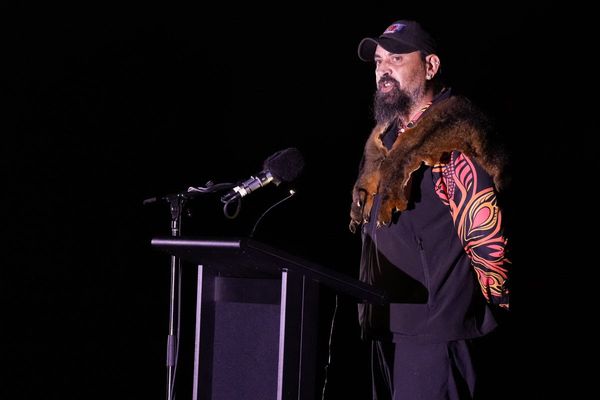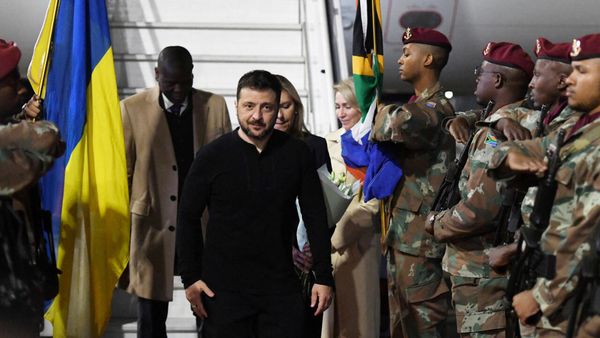A veteran airline consultant says pilots likely "lost control" of a plane which crashed in Nepal, killing at least 68 people.
The domestic Yeti Airlines plane went down during a 27-minute flight from Nepal's capital Kathmandu to Pokhara, a tourist town known as the gateway to the Annapurna Circuit, a popular hiking trail in the Himalayas.
WARNING: This story contains content that some readers may find distressing.
There were 72 people on board, including an Australian passenger.
The weather had been clear and there was no immediate indication of what caused the crash.
Video posted to social media showed a plane flying low before sharply rolling in the air and disappearing out of frame.
One witness said he saw the aircraft spinning violently in the air after it began descending to land, watching from the terrace of his house.
Veteran airline consultant Neil Hansford told the ABC that, based on reports, he thought the crash may have been caused by "pilot-handling".
"I think the pilots have lost control of the aircraft and that's why it's ended up on the edge of a ridge," he said.
"There are suggestions that it actually was upside down.
"Fuel is not an issue, because it burnt so readily, because there was obviously a lot of fuel on board."
Officials suspended the search for the four missing people overnight and planned to resume looking Monday.
Poor aviation record
It was Nepal's deadliest air crash since 1992, the Aviation Safety Network database showed, when a Pakistan International Airlines Airbus A300 crashed into a hillside upon approach to Kathmandu, killing all 167 people on board.
Nearly 350 people have died since 2000 in plane or helicopter crashes in Nepal — home to eight of the world's 14 highest mountains, including Mount Everest — where sudden weather changes can make for hazardous conditions.
Mr Hansford said that topography — the height of the mountains, the rough terrain and the mists that descend — was "hostile to aviation".
"It requires a very high level of pilot skill, very good equipment and, unfortunately, a country underdeveloped like Nepal will always battle to have those factors in place," he said.
Nepal is neighboured by China and India.
The Pokhara airport was built with Chinese assistance and only opened on January 1.
Mr Hansford said he was "not at all" confident about flying in Nepal, and pointed out the European Union would not allow a Nepalese-registered aircraft in their airspace
"I think you certainly take your life into your own hands," he said.
DFAT seeking information about Australian passenger
The fate of the Australian remains unknown.
Meanwhile, the Civil Aviation Authority of Nepal has released a list of names of passengers on board the flight, including the name of an Australian.
The Department of Foreign Affairs and Trade has confirmed an Australian was on the flight and has been approached by the ABC to confirm their identity.
"The Australian Embassy is urgently seeking to confirm the welfare of the Australian," DFAT said.
"Owing to our privacy obligations, we are unable to provide further comment."
In a tweet, Prime Minister Anthony Albanese said the government was aware that an Australian was aboard the crashed plane, and they were urgently seeking further information from Nepalese officials.
Treasurer Jim Chalmers shared his condolence to the families of the victims and said DFAT was providing consular support to the family of the Australian passenger.
"Our hearts go out to all of the families of the crew and passengers of the Yeti airlines flight which crashed in Nepal, our thoughts are with the people of Nepal as well."
Those on board the twin-engine ATR 72 aircraft included three infants and three children, the Civil Aviation Authority's statement said.
Other foreigners on the flight included five Indians, four Russians, two South Koreans and one each from Ireland, Argentina and France.
Footage taken by one of the passengers in the moments before the plane crashed has also emerged online.
Local TV footage showed rescue workers scrambling around broken sections of the aircraft.
Some of the ground near the crash site was scorched, with licks of flames visible.
At least one witness reported hearing cries for help from within the fiery wreck.
Local resident Bishnu Tiwari — who rushed to the crash site near the Seti River to help search for bodies — said the rescue efforts were hampered by thick smoke and a raging fire.
"The flames were so hot that we couldn't go near the wreckage. I heard a man crying for help, but because of the flames and smoke we couldn't help him."
Firefighters carried bodies, some burned beyond recognition, to hospitals where grief-stricken relatives had assembled.
At Kathmandu airport, family members appeared distraught as they were escorted in and, at times, exchanged heated words with officials as they waited for information.
Prime Minister Pushpa Kamal Dahal — who rushed to Tribhuvan International Airport in Kathmandu after the crash — set up a panel to investigate the accident.
"The incident was tragic. The full force of the Nepali army, police has been deployed for rescue," he said.
France's air accident investigation agency BEA said it would participate in the probe into the causes of the crash and coordinate with all other parties involved.
ABC/Wires







